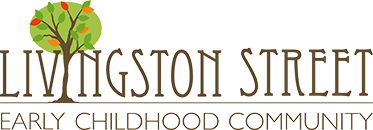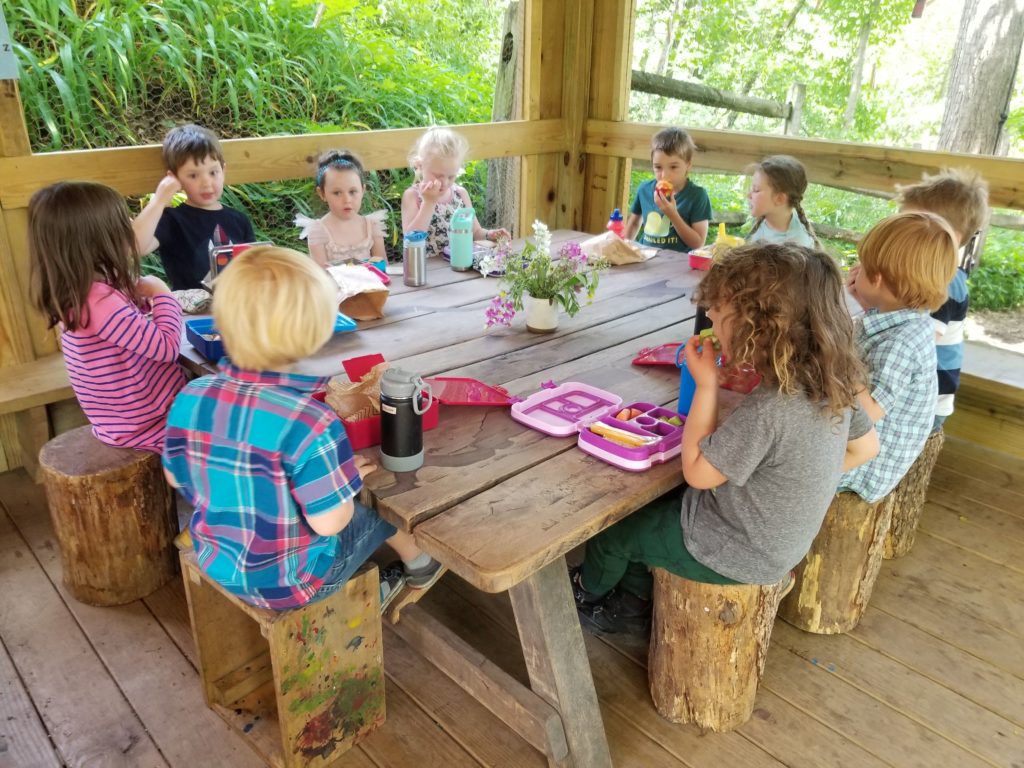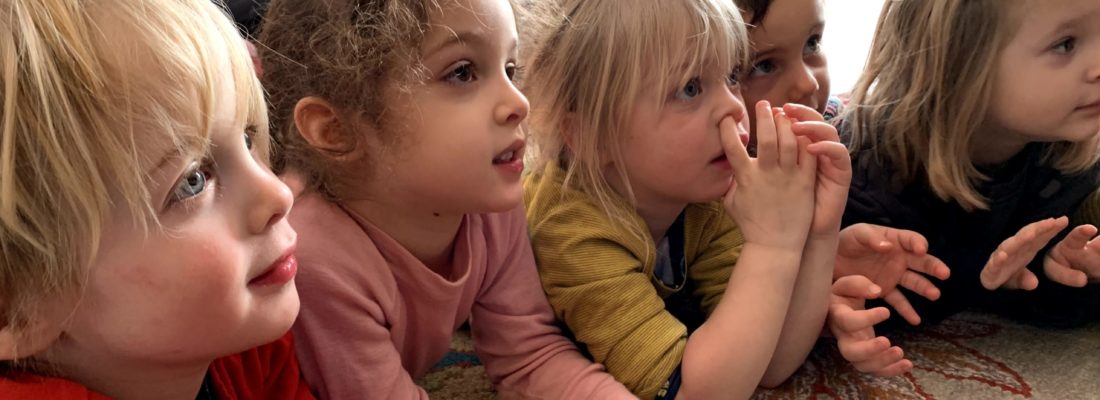At Livingston Street, caregivers model socially responsible behavior; in other words, rather than telling children how to act, we perform the behaviors we want the children to learn, and children grow to follow our examples. We understand that young children look to their caregivers as guides and repeat the actions they see; they are tuned into our words, our emotions, and our expressions, and we can use this attention to our advantage when guiding young children. In fact, learning through modeling has a deeper effect than any verbal instruction ever could. Research tells us that children at this age learn through the body, through their senses and their physical movements, and that verbal instruction has little-to-no effect on changing behaviors.
So what might this look like? Sometimes, it’s so subtle it’s hard to see! For example, co-teachers at Livingston Street don’t just get along really well because of a lucky twist of fate, but rather because we are constantly modeling prosocial behaviors. We work to listen to one another, empathize with each other’s feelings, respect each other’s needs and make compromises in order to have a healthy and functioning relationship. This relationship then is modeled to the children who are with these co-teachers every day, it becomes an example the children can follow when interacting with their peers.
Caregivers at Livingston Street also work closely with the children to navigate early social interactions. Healthy, honest communication, both verbal and non-verbal, is a critical tool for young children to learn in order to develop an understanding of self and other. An understanding of the stages of human development informs the teachers about how children think, what language is useful for children to use in order to be heard and understood, and modeling listening skills.


